At first glance Pied-billed Grebes may come across as nondescript, bland little birds without much personality but I’ve found the opposite to often be true. When they’re not resting or grooming they’re active, quite vocal and when they’re feeding in groups they’re often aggressive, even pugnacious. Their kleptoparasitic tendencies can be entertaining to watch in the extreme.
I took this series of nine photos several years ago. The image quality suffered in several of them due to marginal lighting but I thought the behaviors were fascinating. I’ve posted two of the images previously but today I present “the rest of the story”.
Notice the layer of ice at the bottom of the frame – that ice will come into play later in the sequence.
As is common for the species, this adult grebe caught a fish that was almost too big to swallow. It struggled to get it down for some time and in this image the slippery fish momentarily escaped. However, the stunned fish…
was easily retrieved from just under the surface of the water. But in the few moments the grebe had its head underwater…
another grebe (just out of frame to the left) rushed in to attempt to steal the fish. The rightful owner reacted explosively…
and began an evasive run across the surface of the pond with the potential thief in hot pursuit. These little birds can really scoot…
so I was quite happy to get multiple images of the action where the bird was entirely within the frame and acceptably sharp.
As I look at these images I can hear in my head the cacophony of sounds from the flapping wings and slapping feet of the two birds as other grebes in the vicinity called out excitedly.
It’s very rare for grebes to come out of the water because the rear placement of their legs and feet makes walking almost impossible. The few times (three) I’ve seen them on land I was barely able to maintain focus from laughing at their awkwardness. But this bird was so desperate to escape its tormentor that it popped right up onto the ice and tried to run. Its feet splayed out to the side on the extremely slippery ice and the bird went almost nowhere. It was truly hilarious to watch.
The potential thief is the bird in the background.
When it realized it couldn’t run, the grebe with the fish turned around to face the other bird. Though from this angle the pose may look like a threat I believe its wings were out only in an attempt to maintain balance as its feet slipped out from underneath the bird. (notice the attachment point of the legs at the rear of the body)
When the second grebe swam out of frame to the left this bird swallowed the fish while it had the opportunity.
I’m fascinated by bird behaviors. Given the choice of high quality images of static birds or lower quality images of interesting behaviors I would nearly always choose the latter, in a heartbeat.
Ron


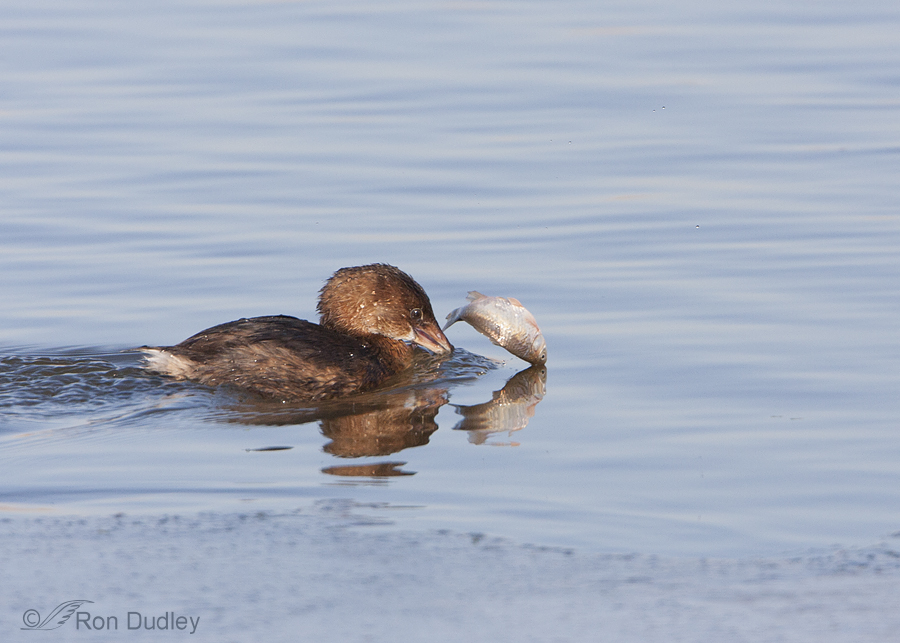
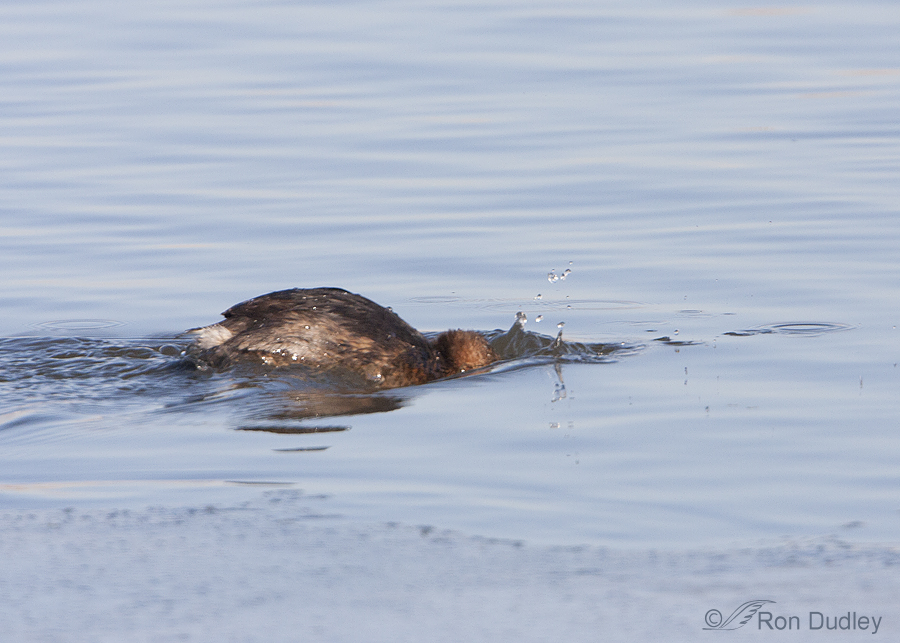
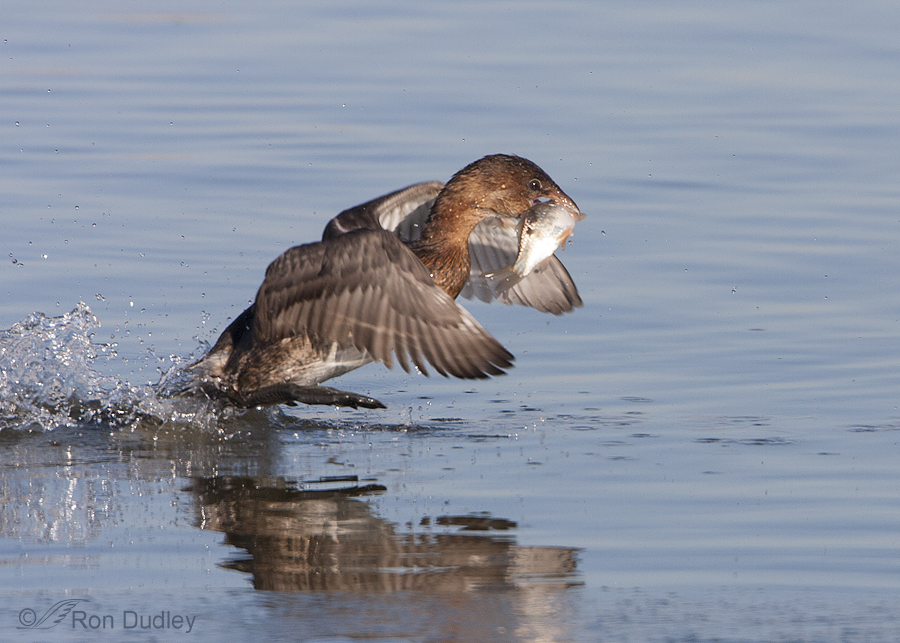
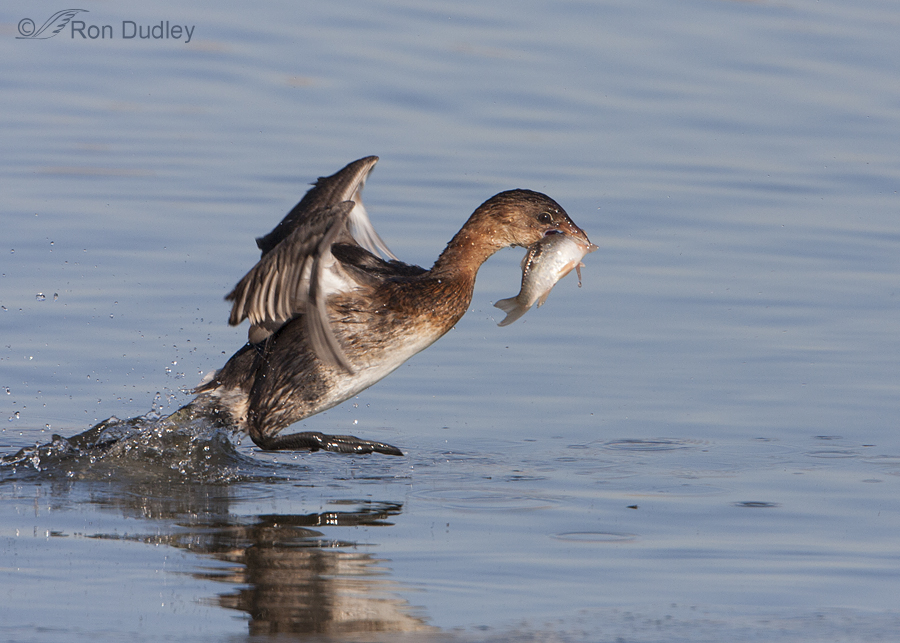
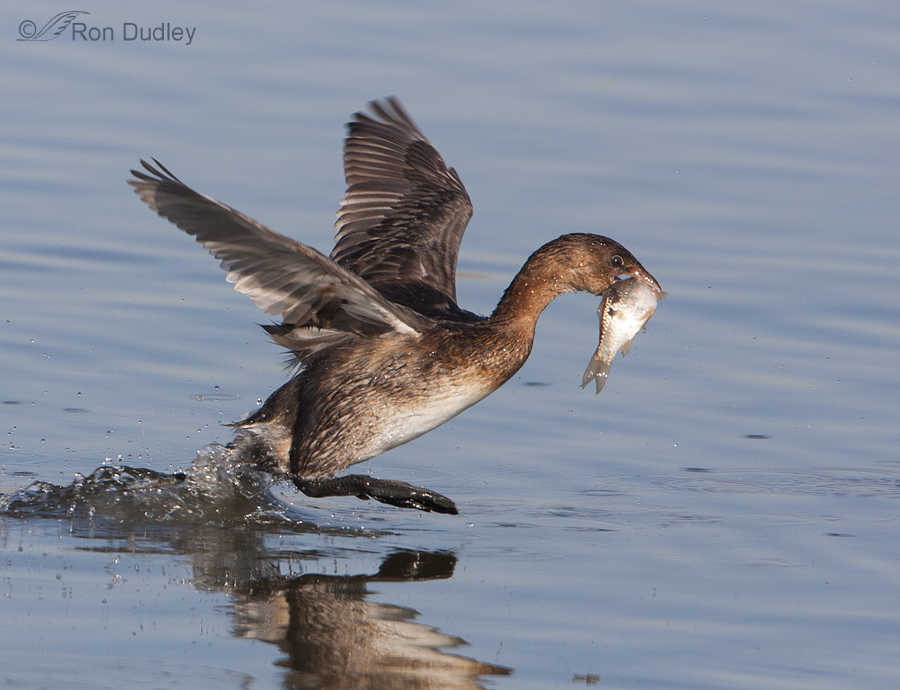
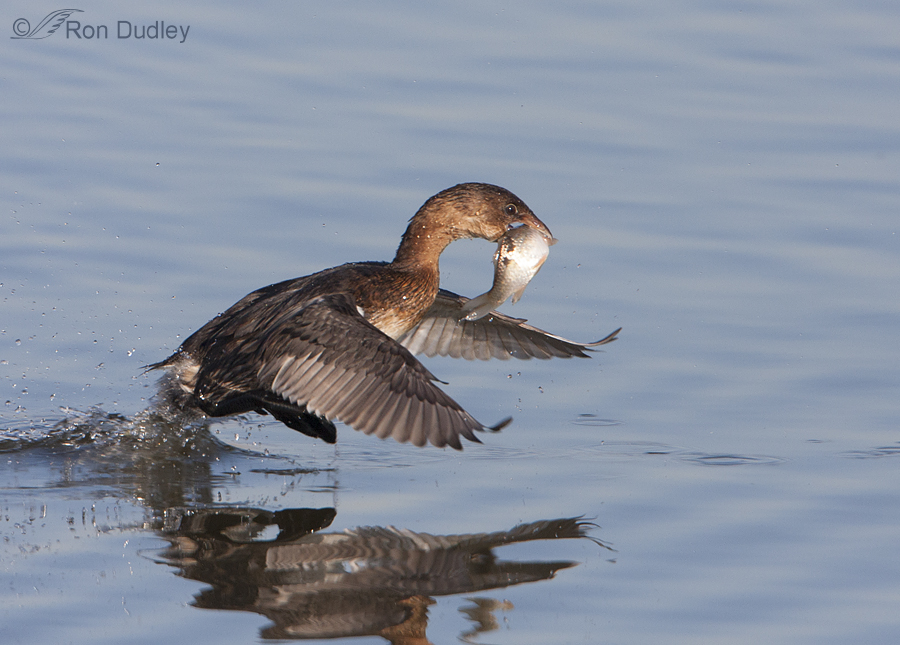
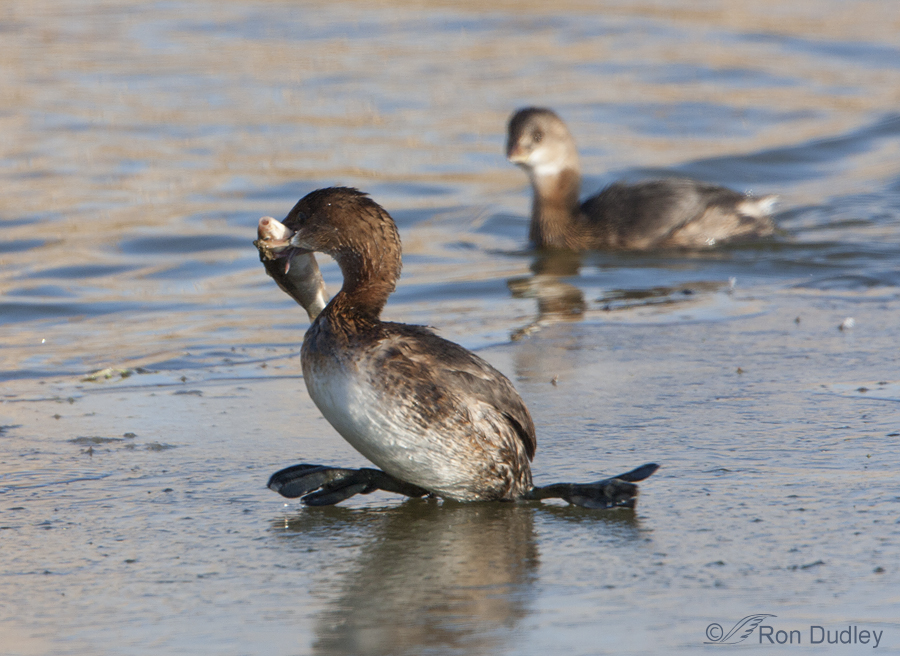
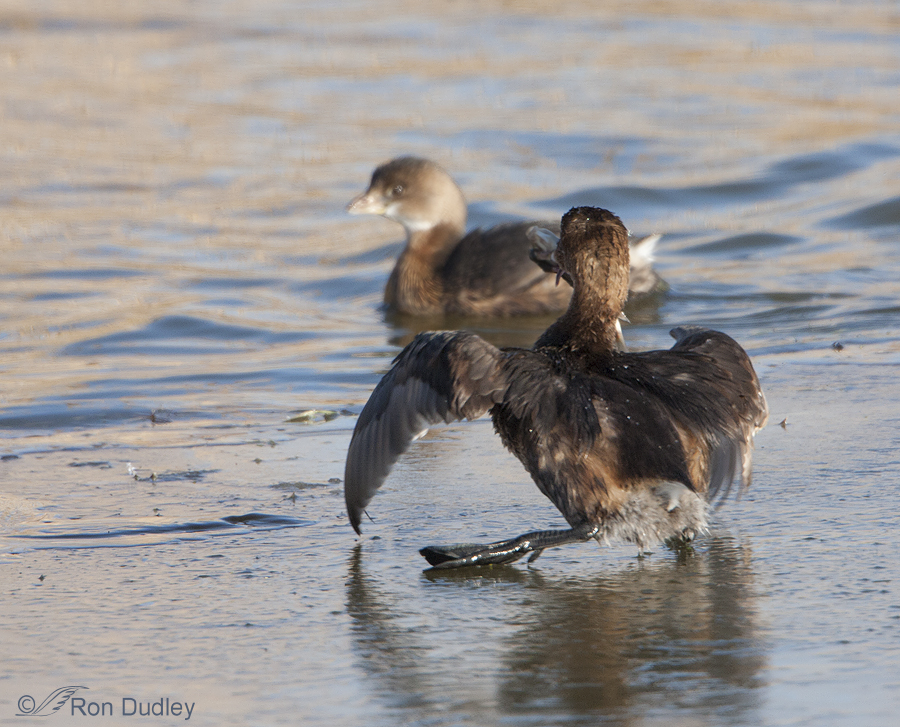
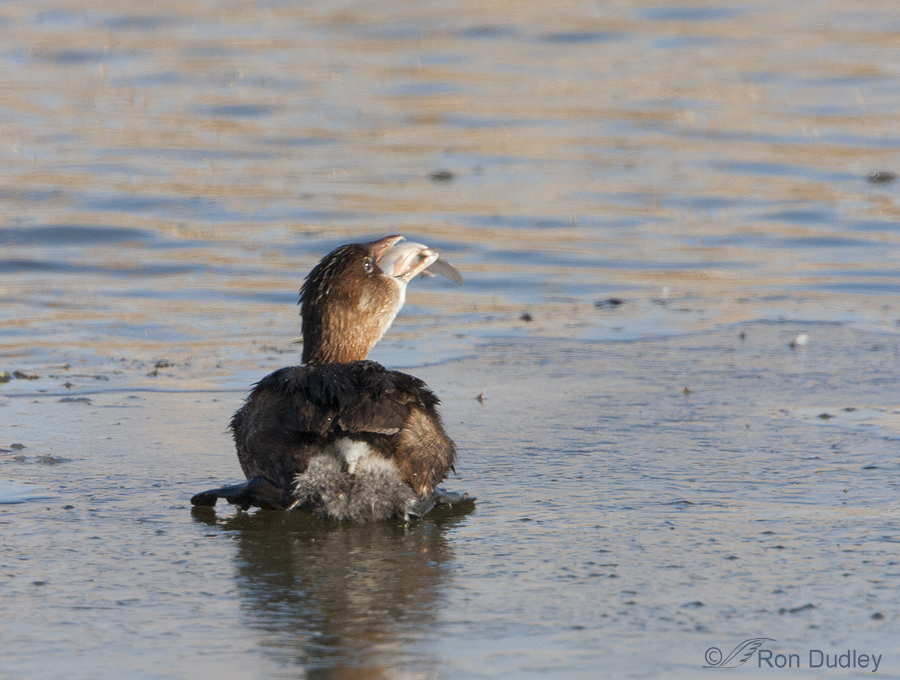
Quite comical – this had me chuckling, especially the first one with its feet splayed out.
Amazing shots, thank you for sharing!
Without a doubt the right choice! Top notch story telling and illustration. The placement of their legs must be a hell of an advantage in water to justify the price. Really informative read!
Fascinating and educational! I didn’t know that hey had such walking difficulties. I’ve never seen one out of water!
Charlotte
I agree with the other comments, and really enjoyed this series. It would have made a great bit of video too – such a pity we can’t concentrate on doing both still and video at the same time!!!
I’ve often thought the same thing about video, Sonja – but since I have to make the choice of one or the other I prefer my still shots.
What a hoot. And beautiful with it. Patty is right about the phrases and behaviours we carelessly ascribe to birds. ‘Bird-brained’ is one that gets me every time. Facing a fraction of the challenges that so many birds do daily would leave me floundering too.
And not just birds either – anyone who uses the phrase ‘gentle as a lamb’ has never watched a lamb butting at its mama for a drink. I have seen ewes legs lifted off the ground by the violence of the lunge.
Elephant’s Child, one of the misleading phrases I always used to point out to my students when I was teaching was when we say someone “eats like a bird”, implying they eat very little.
That was a really fun and informative series of photos. I am still laughing by those feet splaying out in oppositie directions on the ice!!! Great shots. Of course they are great shots. the great Ron Dudley took them!!!
Thanks for your confidence, Ellen. Glad you enjoyed the series.
Great series! Wish I could have seen this in person. Several months ago I was watching a lizard trying to get quickly across a slippery rock, and its attempts to gain traction looked very much like the cartoon Roadrunner winding up to start running. It did accomplish its goal, but it gave me a good laugh in the process. With this Grebe, I think I would also have felt sorry for it in its helpless state…
Thanks, Susan. This certainly was entertaining to watch and photograph.
Ron–You get so many beautiful images of birds, but even better, you get so many interesting ones, ones that show both unusual and typical behaviors.. This series reminds me that when we say things like “free as a bird”, we are vastly in rating the challenges they are constantly facing and the desperation of their struggle to survive…we are so lucky!
You’re so right, Patty. So many of our sayings are based on misconceptions or downright falsehoods.
As you mentioned Ron, Grebes are basically helpless once on land because of the placement of their legs and weight of the upper body. On occasion they will land at night on shiny, wet surfaces like rain covered roads or pavement (thinking it is a body of water) and they become unable to take flight again to “escape” their helpless, vulnerable situation. I have been able to rescue many without ever seeing the bird but from their description simply directed the finder to take the bird to a nearby pond where the bird can now run along the surface to gain enough speed to allow flight.
Bill
Bill, We’ve had some dramatic examples in Utah of flocks of migrating grebes crash landing in storms with thousands killed by the impact and the rest unable to take off. Here’s an example from last spring with Eared Grebes.
http://www.deseretnews.com/article/865578300/Thousands-of-bird-crash-land-at-Dugway-Proving-Ground.html?pg=all